Last Updated on October 6, 2019 by Soumya
Hampi is an open museum of ancient, ruined temples. And like every other museum in this world, Hampi has its own set of showstoppers. The Vijaya Vittala Temple with its beautiful stone chariot is one of them. The other is a famous living temple – The Virupaksha Temple of Hampi. In this post, I write about this unique temple and why it enthralled me to bits.
Why Virupaksha?
I am not a temple person. I will not make an early morning journey to pray at a temple. But talk to me about a temple with exquisite architecture and beautiful murals, you will find me up at 5 in the morning. Excited and raring to go! Virupaksha was a similar story.
Ancient Indian Temples have always fascinated me. It is almost impossible to find so much art and architecture anywhere else in the world. Exploring this art is my way of paying homage to the God that resides within these sanctuaries. Virupaksha in Hampi was one such expedition. A 3-headed Nandi, beautifully exquisite murals, and an upside-down shadow – who knew the temple had so much to offer!
Come, let’s explore the famous Virupaksha Temple of Hampi together!
After a quick freshening up, the three of us were ready to go. We had just arrived in Hampi and our first stop was going to be the Virupaksha Temple. Ramu, our tuk-tuk chauffeur for the next two days, drove us around effortlessly and parked right by the side of what remained of the Hampi Bazaar.
I looked to my left and there stood the tall, yellow silhouette of the Virupaksha Temple. The temple is dedicated to Lord Shiva of the Hindu trinity – Brahma, Vishnu, and Shiva. It is an important pilgrimage center for Hindus even today. It was built in the early 7th century but not in the grand form that we see today. Much of it was added between the 14th and 16th century, especially during the rule of King Krishna Deva Raya.
The Front Courtyard
We entered through the Gopuram or the Entrance Spire into an open courtyard and for a moment, I was a little disappointed by the simplicity of it all. There was an old, dilapidated mandapa to my left and a bangle shop to my right. I craned my neck to see a “Please remove your shoes here” sign by the side of the shop. Nothing much. Yet!
Yet another gopura in front invited me. Beyond that, I could clearly see the main shrine. I wanted to hop in there. But not before my tour guide pointed out to two important things in the front courtyard. I would not have noticed those without him.
The 3-Headed Nandi
The first was a three-headed Nandi (a bull that is the carrier of Shiva of the Hindu trinity). Virupaksha is unique because it is the only temple along the length and breadth of India that possesses such an image of Nandi. The exact origins of a Nandi like this are not known but it was probably done to honor all three of Brahma-Vishnu-Shiva. My guide claims that “anyone who comes to Hampi and does not see the 3-headed bull has not really seen anything”.
Emblem of Vijayanagara Kingdom
The second is the emblem of
The Inner Sanctum
We remove our shoes at the nondescript shoe stand and enter into the inner courtyard that houses the inner sanctum and the Ranga Mandapa that leads to it. On my left I see a huge elephant being fed by its mahout. Surprise Surprise! The temple has its own elephant!
In front is the main shrine which seems abuzz with activity. And to my right are smaller peripheral temples.
A Wedding in the Temple
I cannot believe my luck when I realize that there is a wedding, one of the most unique Indian experiences, going on inside the temple. A wedding is one of the most unique The whole place is alive with the chanting of mantras and vibrant with colors. The bride and bridegroom are dressed in white. We are just in time to catch the last of the festivities.
The Murals
As I pop into the Ranga Mandapa, my guide points up to the ceiling to reveal some pretty amazing murals. Some of these have been badly restored probably leading to more damage. But what remains is exquisite.
The murals are the most vibrant on the ceiling of the Ranga Mandapa. However, a few are still visible in some of the peripheral temples. These paintings are over 600 years old and depict scenes from Hindu mythology. The Ranga Mandapa is the area where all social activities took place. This place was no doubt decked up the most, with both carvings and paintings, to convey the power of the King that built it.
An Inverted Gopura!
Our guide then ushers us out quickly and takes us to an almost-secretive chamber at the back of the temple. I say almost because, like anywhere in India, we were not the only people in there! There is another couple too with a guide which tells us that this is probably one of the guides’ many trade secrets. There is a small hole in the wall in front of us and we wait for my guide to climb up and do some acrobatics. In a moment, we see an inverted shadow of the Gopura on the wall behind. The small hole had created a pinhole effect causing the upsidedown shadow and when this happens at a revered place, a number of theories come up. Maybe that is how mythology is created!
What’s In The Periphery?
We move out to the peripheral temples to catch glimpses of other deities and their own Ranga Mandapas. All of them had been adorned with paintings and torans (carved hanging on the door). But few retain them or their sheen.
For more on beautiful torans and intricate carvings, read my post on the Temples of Pattadakal.
The Family Tree
A huge chart on the wall catches my eye. It is the family tree of all dynasties that ruled the Kingdom of Vijayanagara with the emblem in middle. The letters fade out in many places. But the glory stays alive in the temples and palaces they built!
Where Is The Elephant?
The temple has its own elephant that it uses for processions – a long-lived tradition of Indian temples. You can view the majestic animal in its shed on your left as you enter the inner courtyard. Apparently, the animal blesses you if you offer it 10 Indian Rupees. We never tried!
Tickets and Other Logistics
There is no ticket to enter the temple but you have to pay INR 50 to bring your camera in. Tour guides, in their customary white uniform, are available right at the entrance. You don’t have to find them. They will find you. We paid our guide INR 300 to show us the temple. Toilets are available outside the temple in the new Hampi market. Clean, western toilets are hard to come by. Indian squat toilets are common. It is always advisable to carry tissues and hand sanitizers.
Helps To Know
- There are monkeys inside the temple. Avoid holding food and bright, dazzling things in your hand or dangling anywhere around in order to be safe.
- Virupaksha is a living temple which means worship is still offered here. You might have to encounter family celebrations and larger crowds.
- You will also need to leave your shoes at the shoe counter behind the shop in the outer courtyard. A very nominal fee is charged for that.
- You will be expected to leave a little something when you seek blessings at the shrines where worship is offered. However, it is completely okay to say no and move on if you are not interested.
- The modern market behind Hampi Bazaar stocks a lot of souvenirs if you wish to buy some.
- Hampi’s famous restaurant, Mango Tree, is 5minute away from the Virupaksha Temple. Their fresh fruit juices are delicious.
For details on how to get to Hampi and what is the best time to go there, please refer to my guide on Vijaya Vittala Temple and The Musical Pillars of Hampi.
I had a great time at the Virupaksha Temple of Hampi. It stood tall among those boulders and was a glowing example of human effort and dedication. Even though my favorite temple in Hampi was the Vijaya Vittala Temple, Virupaksha made a strong impression on me. Vittala Temple was the epitome of glorious architecture and beautiful carvings whereas Virupaksha was the paragon of stunning murals. Given a choice, I would probably pick both. Which one would you pick? Let me know in the comments below and let’s get the conversation started.

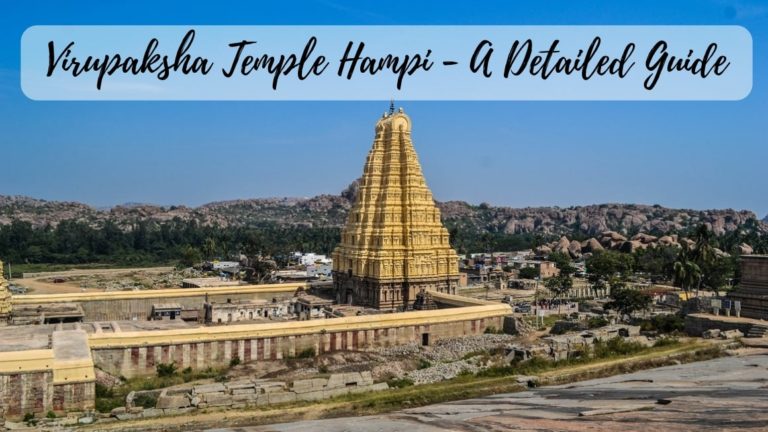

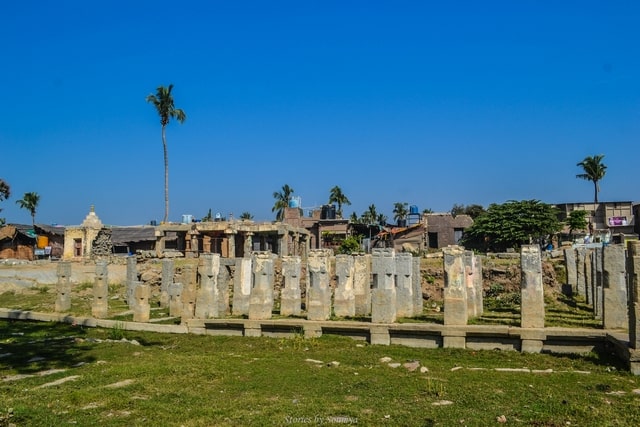
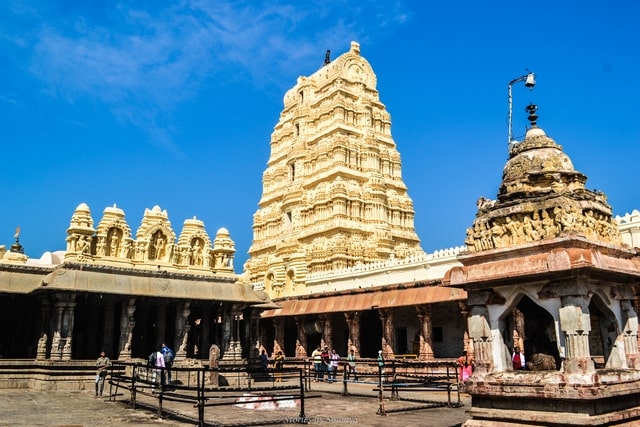
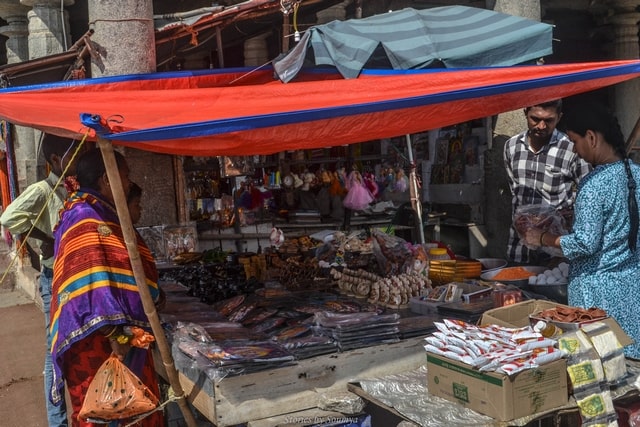
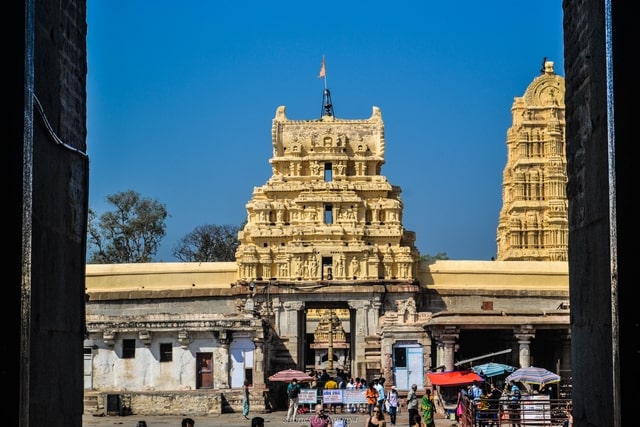
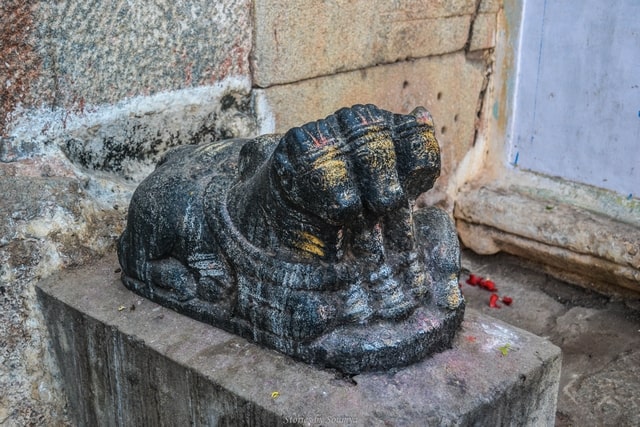
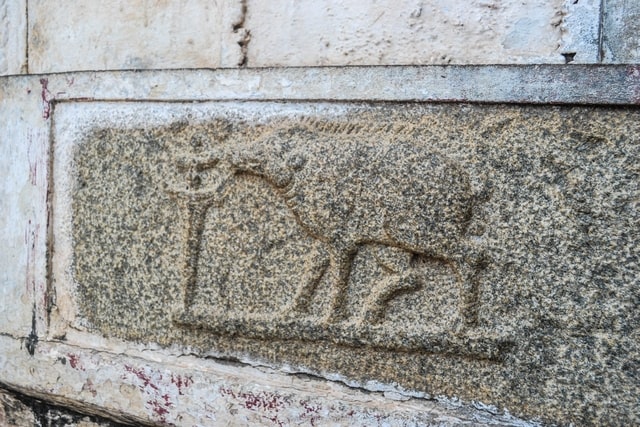
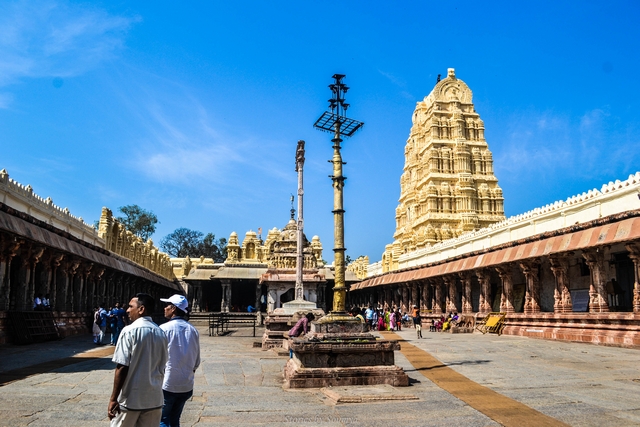
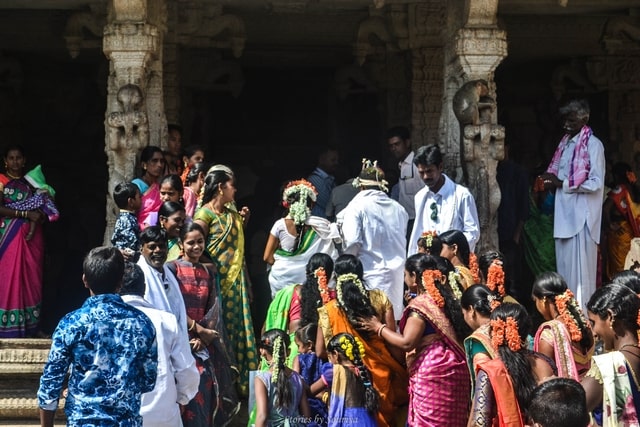
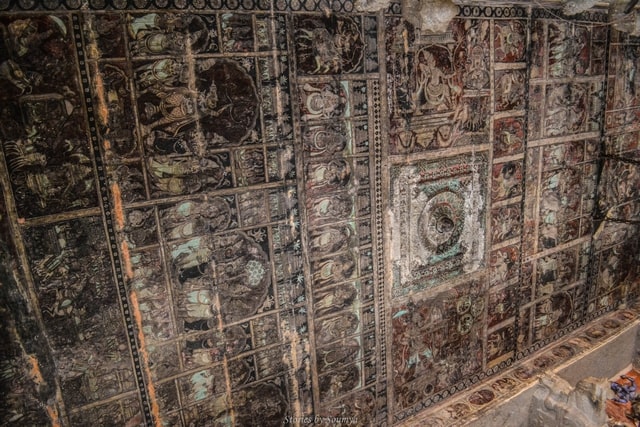
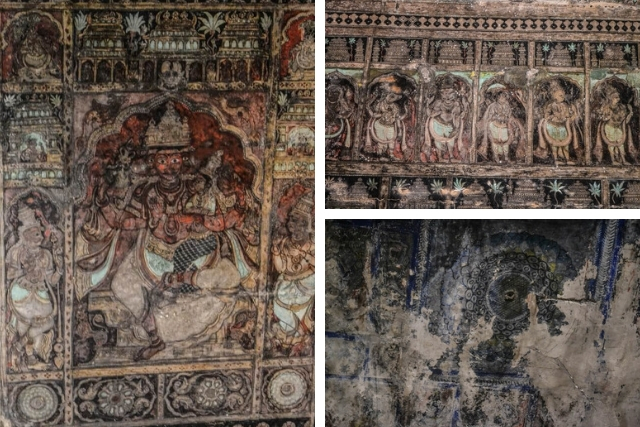
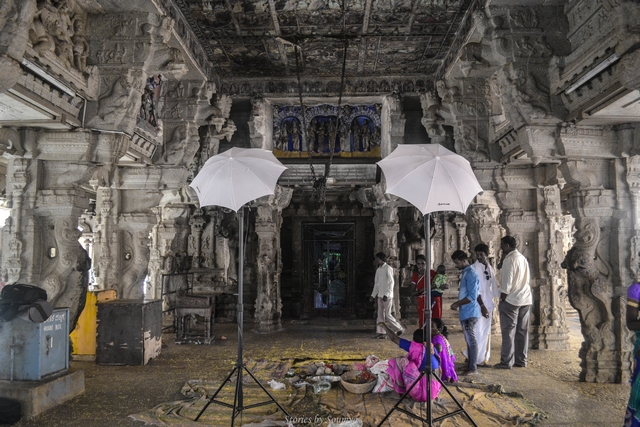
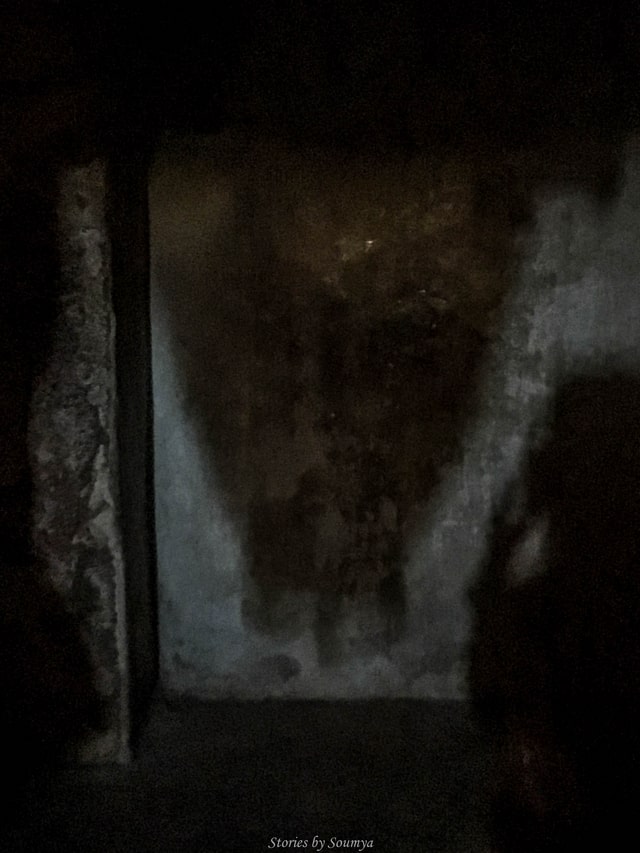
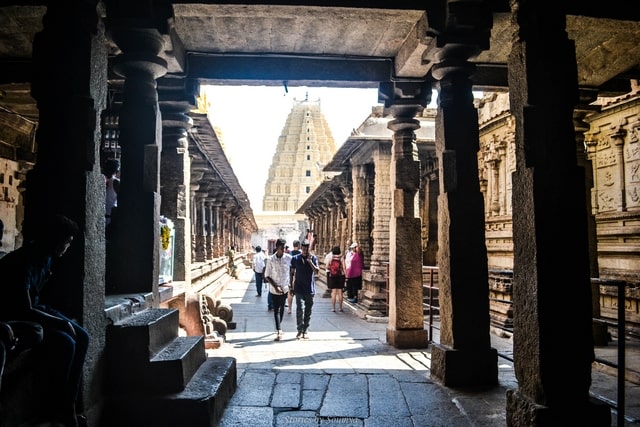
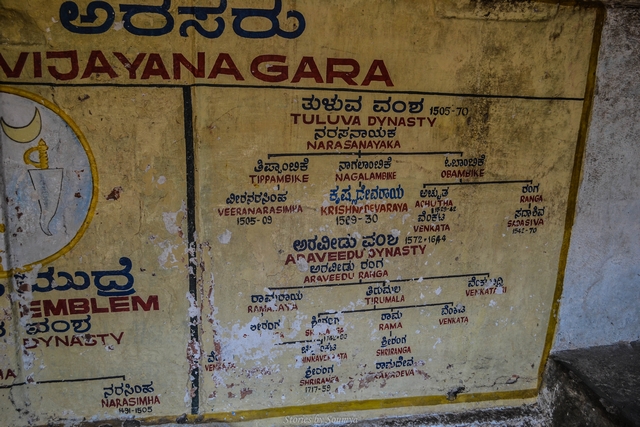
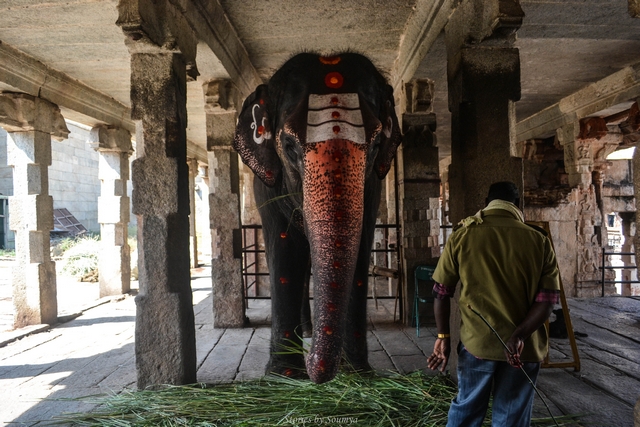
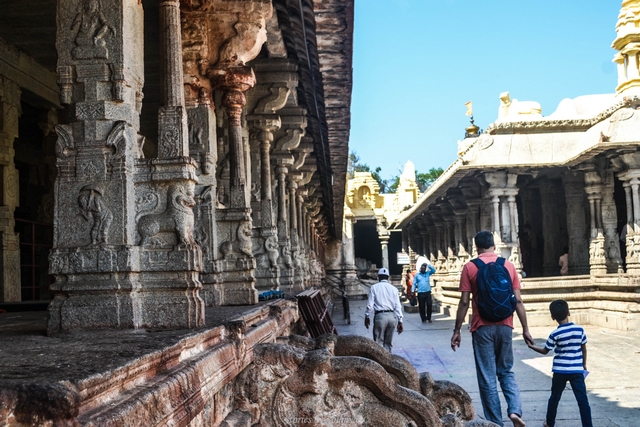

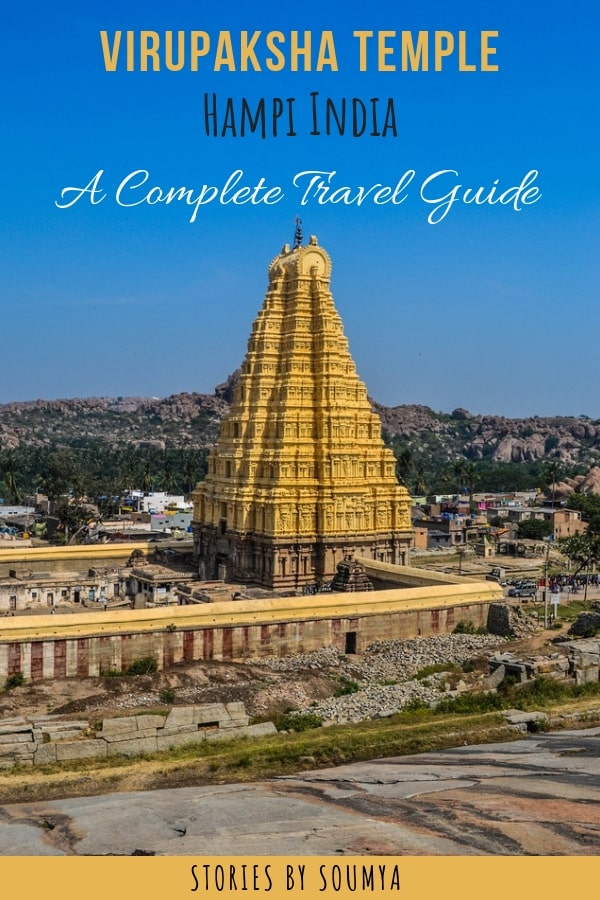
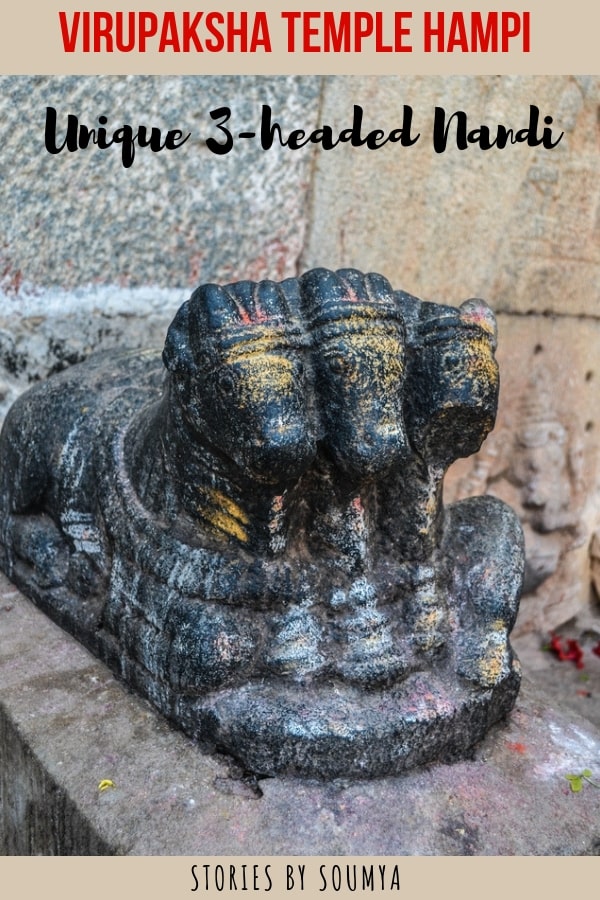
Thanks for sharing your expreience, This is very helpful post
Feeling great to read your article. It’s really good and informative. Keep posting such helpful articles.
Thank you so much for the kind words.
Thank u
Very helpful details. I’m here to know about pin hole effect of this temple.
Thanks, Abhi. I am glad you found the details helpful. The formation of an inverted shadow in the inner sanctum of the Virupaksha Temple is very much the result of pinhole effect. It is a wonderful real life example. Are you a student researching on pin hole effect?
very nice post , you have sent there to us.
Thank you, Dr Pranita. Glad you liked this post on Hampi’s Virupaksha Temple.
Hey Soumya, I absolutely love this article of your!! I had heard about Hampi but never really knew of Virupakshya temple the details in it – the murals, the 3-headed Nandi, the (not-so) secret chamber, the elephant… it feels like I got to visit Virupakshya temple with you.
Thanks Jyoti. I am glad you liked it.